Simran Raina, Year 2 Engineering.
Abstract
With the COVID-19 pandemic still raging on in many parts of the world, the need for safe masks is relevant. Many masks, however, tend to slide down the nose or need to be adjusted periodically, forcing the wearer to adjust it. In this project, a non-slip, cloth mask was designed that will not slide off the wearer no matter what their facial expression. The mask was made by implementing three features: a wireframe, chin stretch, and ear loops. Based on tests conducted on the author, it is a success, and does not slide or need to be adjusted after smiling, frowning, and opening the mouth. A similar mask used as the foundation for the modified mask passed the smiling and frowning tests, but failed opening the mouth tests. This shows that the non-slip mask is much safer as it does not need to be adjusted and consequentially reduces contact with the face.
Introduction
On March 11th, 2020, the World Health Organization (WHO) declared the COVID-19 pandemic (Ghebreyesus, 2020). This pandemic changed the course of 2020, with governments at both the federal and local levels implementing health and safety guidelines to protect the community. In British Columbia, Canada, people over the age of 12 are required to wear masks indoors as of November 20th, 2020 (BCCDC, March 2021). Mask-wearing is critical for slowing down the spread of COVID-19, as it prevents liquid droplets carrying the virus from freely floating (BCCDC, March 2021). Thus, it is important that masks fit the wearer properly. People are being encouraged not to touch their faces, but adjusting one’s mask does just that, making the availability of non-slip masks a necessity (BCCDC, May, 2021).
The aim of this project is to incorporate three main features in a non-medical, cloth mask that can prevent it from sliding down the face. The features are: the wireframe, the chin stretch, and ear loops. To test their efficacy, the subject will make common facial expressions to see if the mask slides down their nose or needs adjustment. If not, the mask in conjunction with other practices, may reduce the spread of COVID-19 by reducing contact with the face.
Materials and Methods
The foundation of the non-slip mask is from the KYK SHOW brand. These cloth masks are washable, inexpensive, and have three layers of protection (including an insertable PM2.5 filter), making them a good foundation for alterations.
There are three main features of the mask: the wireframe, the chin stretch, and the ear loops. They work together to adjust the mask to the wearer’s facial contours so it is a comfortable and secure.
Feature 1: Wireframe
Firstly, a wireframe was implemented. This was done using 18-gauge copper wire (Small Parts brand). The mask’s upper seam was opened and the copper wire was inserted along the length of the seam, a full 20cm. It was then sewed back together to keep the wire in place (see figure 1). Unlike most commercially available masks, this wire spanned the entire length of the upper seam instead of just on the nose. This enables the wearer to ensure the upper seam fits the unique contours of their face.

Figure 1: Copper wire in mask. Copper Wire is sewn into length of seam.
Feature 2: Chin Stretch
The second change works in conjunction with the wireframe. It is the chin stretch, which is cotton fabric sewn onto the bottom of the mask. This mask extends past the chin, unlike others that rest along the edge of the chin. The cotton fabric was cut in a rectangular shape with a length of 24cm- which was the same length as the bottom seam of the mask- and width of 5cm. This width was based on the distance from the author’s chin to throat, which is 4cm. The extra 1cm of fabric was used to sewn into the mask, along the 24cm long bottom seam. As a result, the seam between the chin stretch fabric and foundation mask aligned with the edge of the chin at equilibrium, so the chin stretch extended past the chin comfortably.
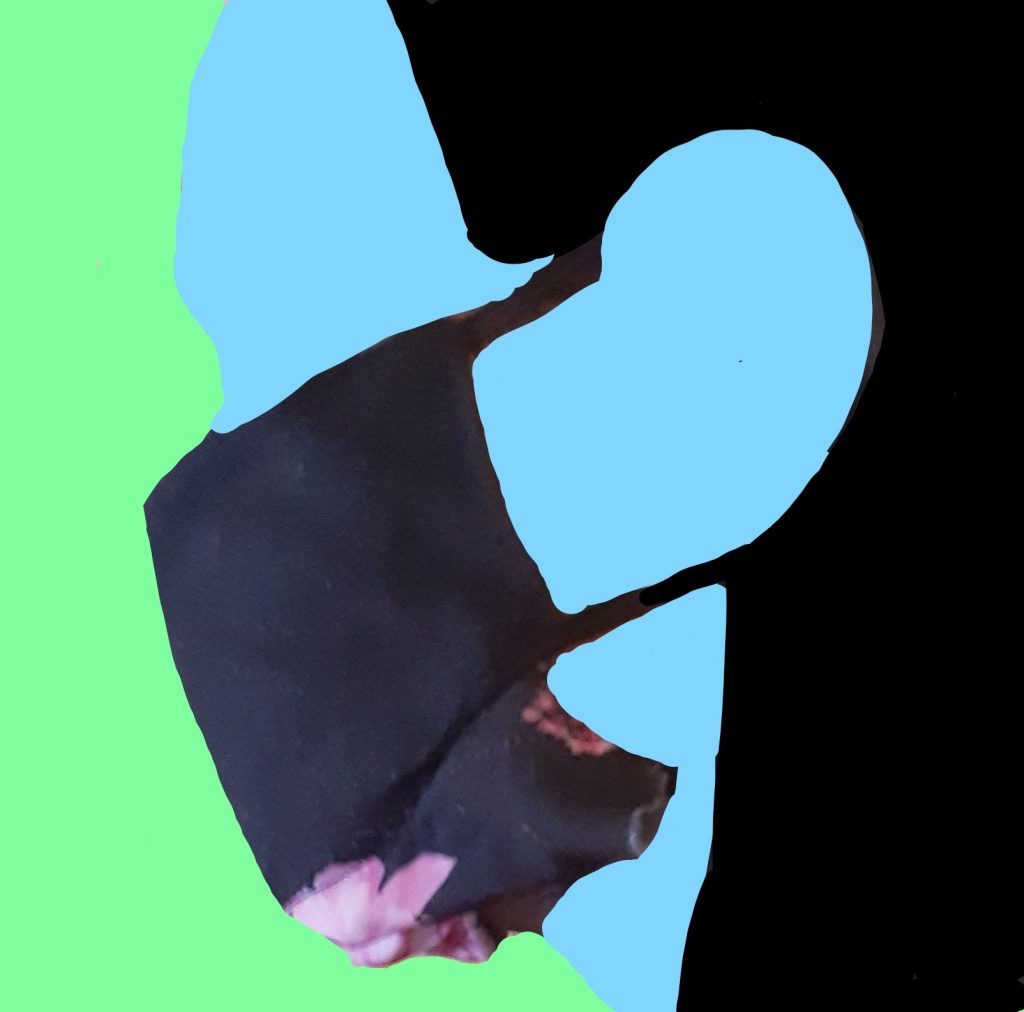
Figure 2: Chin Stretch seam with mask at edge of chin; chin stretch extends past the chin.
Feature 3: Ear Loops
The KYK SHOW brand mask came with ear loops. This was kept to tighten and adjust the masks to any individual. By tightening the loops, the wireframe is restricted and stays rigid at the position initially set. Not all masks come with ear loops, making this modified mask more secure than others.
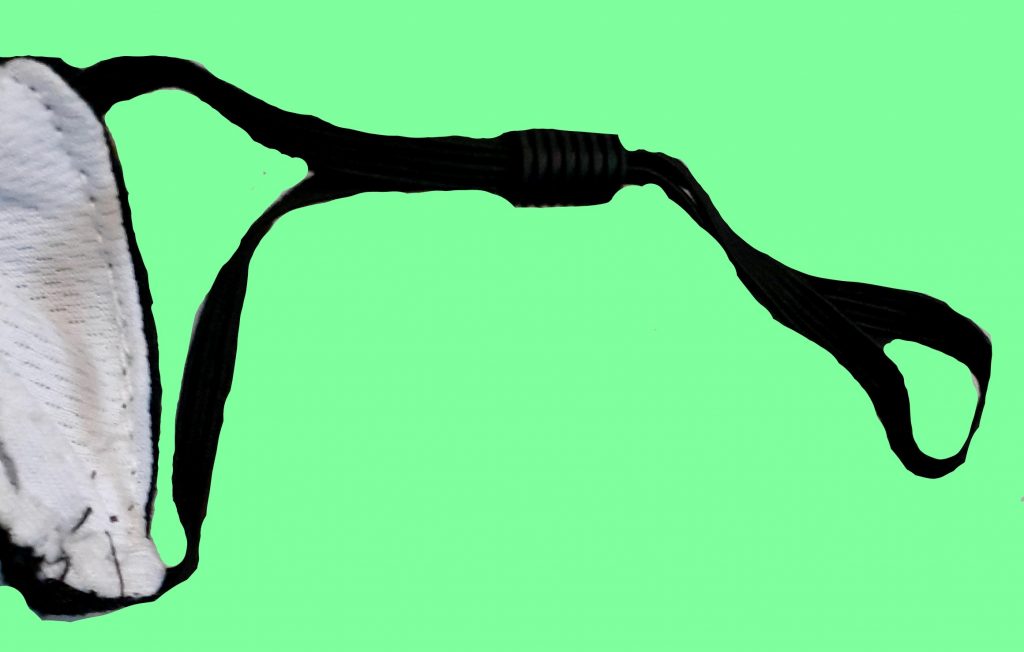
Figure 3: Ear Loop can be adjusted to make the mask tighter or looser for the mask wearer.
Results
Due to safety precautions, the prototype’s data represents the single participant, the author. The mask was suited to their facial structure, and results may differ from person to person.
Two masks were compared: the modified mask and the unmodified, store-bought KYK SHOW mask. The first tests conducted were to test facial expressions. This was done by wearing each mask, adjusting them to fit the author’s facial structure, and keeping them unchanged throughout the rest of the experiment to ensure precision in results. A total of ten trials were conducted. The two expressions tested were smiles and frowns, and both masks did not move and did not need to be adjusted in all ten trials conducted per expression (see figure 4 and 5). The next test was to see if the masks slid down the nose when opening the mouth. This was done by first putting on the masks and adjusting them to fit my facial structure, and then opening my mouth as wide as possible. Out of ten trials conducted, the unmodified mask slid off the nose completely in all of them, whereas the modified mask did not only stay still, it also readjusted itself after closing the mouth (see figure 6).
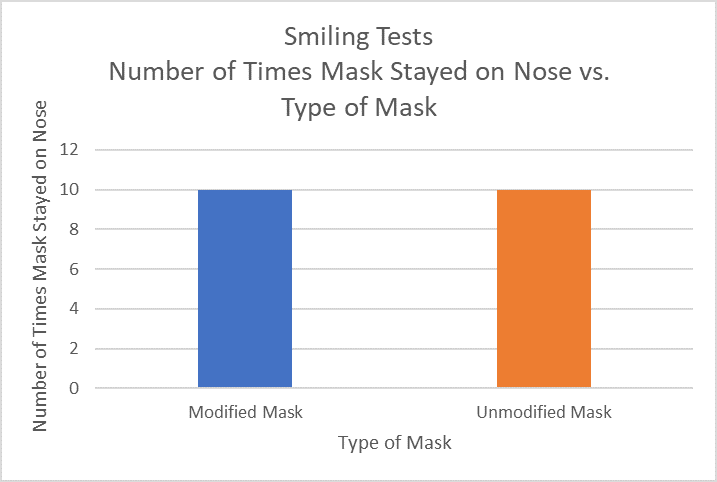
Figure 4: Smiling Test (10 Trials)
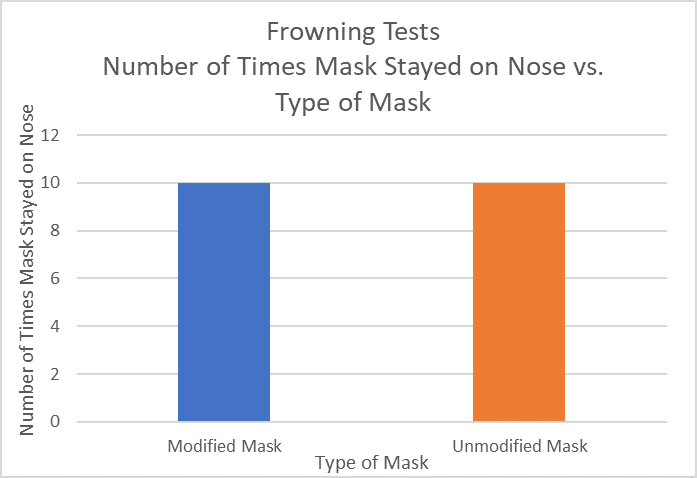
Figure 5: Frowning Tests (10 Trials)
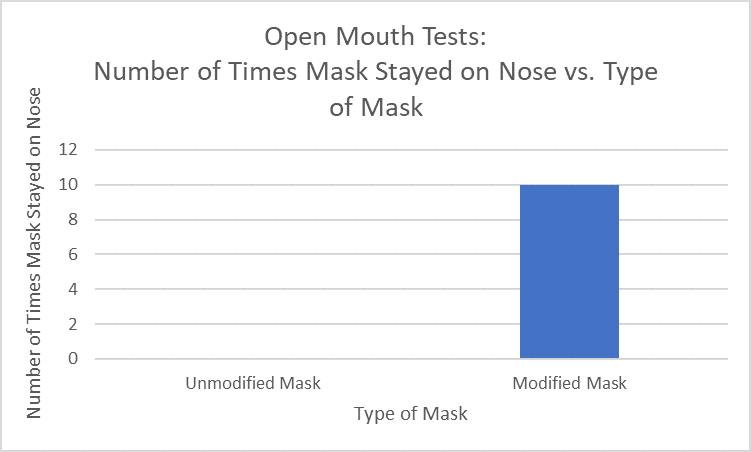
Figure 6: Open Mouth Tests (10 Trials)
Discussion
Both the modified and unmodified mask remained on the nose for smiling and frowning tests. The unmodified mask did poorly in open mouth tests due to the lack of chin stretch. When opening the mouth, the chin pulled the entirety of the mask down, causing the upper seam to fall off the nose completely. In the case of the modified mask, it was the opposite. When opening the mouth, the upper seam remained in its position, while the chin stretch moved towards the chin. This mechanism enabled it to also self adjust, as once the mouth was closed, the chin stretch would slide back to its initial position.
The top wireframe also helped keep the upper seam in place, balancing the forces acting on the mask. When opening the mouth, the chin exerted a force downwards on the mask, but the wireframe exerted a force on the nose and cheekbone, keeping the upper seam of the mask in place. Thus, the chin stretch would be pulled along the length of the chin by the mask, but would not be pulled off completely due to its length.
In the modified mask, the wireframe was positioned slightly above the cheekbone, which meant smiling, frowning, and speaking did not affect its position. The Ear Loop also prevented the mask from slipping, although to a lesser extent, as it tightened the mask and made it fit closely to the face. The ear loop’s tension served as an advantage because it secured the mask to the face, but also as a disadvantage because it causes discomfort to the wearer if too tight. There is therefore a fine balance for the tension in the ear loop which differs from person to person.
Based on the testing, the modified mask was a success. It remained in its position for smiling, frowning, and keeping the mouth open. The unmodified mask did as well as the modified mask in frowning and smiling tests, but failed ever trial in open mouth tests, which can be attributed to the lack of the chin stretch.
This project warrants further research, as the author was the only subject of testing. To make the results more accurate and see if the modifications work for different facial structures, many subjects are needed.
References
Dr. Ghebreyesus, Tedros Adhanom. WHO Director-General’s opening remarks at the media briefing on COVID-19, 11 March 2020, World Health Organization. Opening Remarks.
“Masks.” BC Centre for Disease Control, BCCDC, 4 Mar. 2021, www.bccdc.ca/health-info/diseases-conditions/covid-19/prevention-risks/masks.
“How It Spreads.” BC Centre for Disease Control, BCCDC, 4 May 2021, www.bccdc.ca/health-info/diseases-conditions/covid-19/about-covid-19/how-it-spreads.